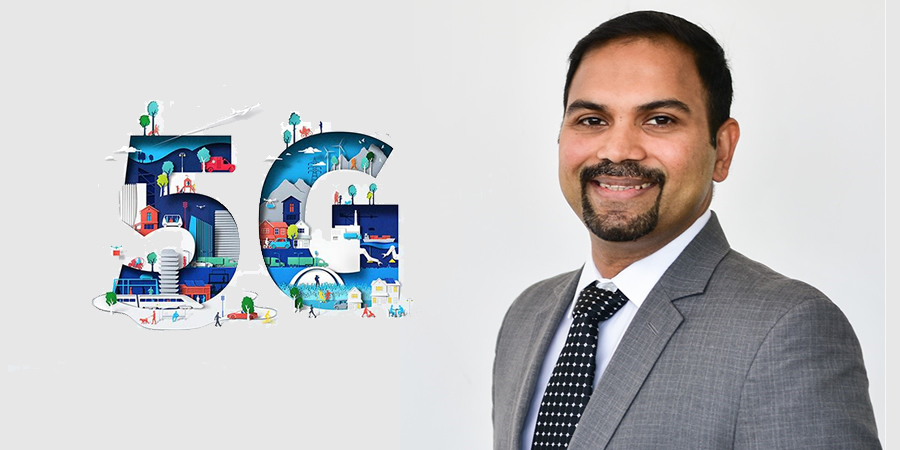The best LTE networks are the foundation of the best 5G performance in non-standalone (NSA) 5G architecture, according to Aji Ed, CTO Middle East and Africa, Nokia. In an exclusive interview with Telecom Review during GITEX Technology Week 2019, Nokia’s CTO outlined the importance of strong 4G network for great 5G performance.
Nokia recently celebrated a major achievement in 5G which is 23 5G firsts in 12 months. Where does the MENA region stand on this achievement?
Yes, Nokia has had many key 5G milestones including several game-changing achievements globally in the last one year. In MENA region, Nokia’s 5G deal with STC involved multiple firsts in STC's network, including the introduction of cloud RAN and AirScale, as well as the deployment of the Wavence platform in the microwave and the AirScale indoor radio. In addition, we introduced the first 5G solution with Zain Saudi for the Hajj, using VR to allow visitors to experience Hajj remotely as if they are present on site.
Nokia has signed contracts with leading operators in the Middle East to deploy 5G commercial networks. As of today (Oct 22), Nokia has signed 48 5G commercial contracts across the globe in all the markets, and we are powering 15 live 5G networks around the world. In the region, Nokia’s public commercial references include du (UAE), Saudi Telecom Company (STC), Zain KSA (Saudi), and Ooredoo Qatar.
In your opinion, how will the cybersecurity scene look like with 5G?
5G opens a lot of opportunities and brings new use cases such as enhanced broadband or ultra-low-latency applications in addition to IoT which will connect billions of devices, thus bringing new security challenges to the table. The challenging nature of 5G networks to support unique and diverse business requirements of various sectors have rendered current network security rendered less than adequate. For example, multi-tenancy in 5G networks, i.e. infrastructure sharing by multiple virtual network operators also known as Network Slicing, will require strict isolation at multiple levels to ensure absolute security. Furthermore, the complexity of securing a network has increased due to the introduction of SDN and NFV in 5G networks.
Operators need to make sure that their 5G networks have a reliable end-to-end security solution built in. Nokia’s end-to-end security solutions help mitigate these security risks. We collaborate with 3GPP and other specification bodies to influence the security requirements, which are then implemented into all our products by our DFSEC (Design for Security Process). We have a wide range of network security solutions and services that help operators to automate and orchestrate the security requirements by consolidating network security requirements into a single operations view via our SOAR (Security, Orchestration, Analytics and Response) approach. It leverages our best-in-class Global Threat Intelligence repository and automated workflow management to help CISOs and CIOs develop an end-to-end visibility and control on their security operations which will become far more critical as the adoption of 5G accelerates.
Are you still focusing on 4G network enhancements in parallel with 5G development?
Yes, 5G goes in tandem with 4G; it’s what we call the NSA (Non-standalone) architecture. It has become clear that great 5G runs on top of great 4G. In non-standalone architecture, the 5G control information goes through the LTE eNodeBs and the throughput can tap the resources of 5G and 4G through dual connectivity. This means that if you have the best performing 4G network, you are already ahead of the game in 5G. A recent study conducted by RootMetrics confirmed that 62% of the Nokia-powered LTE networks operated by one of the big four – Sprint, AT&T, T-Mobile, and Verizon – in the United States, delivered the fastest or second-fastest network speed. This RootMetric score is highly relevant in the context of 5G as the best LTE network performance is the foundation for the best 5G.
In what way does 4G differ from 5G?
2G was all about voice, 3G was about getting in broadband and data connection but the focus was still on the voice. 4G / LTE was about the higher speed broadband experience. 5G is about extreme broadband as well as other ultra-low latency use cases. LTE was designed for people whereas 5G was designed for people, industries and machines and that is what differentiates the two technologies.
5G technology has enormous potential to transform the way people live and work as well transform multiple sectors. 5G will provide ultra-high bandwidth and low latency services, as well as new applications in areas such as virtual reality, augmented reality and artificial intelligence. Energy, healthcare, education, transport and entertainment sectors will benefit from various IoT use cases enabled by 5G. These use cases will not only enhance operational efficiencies and user experiences but also provide new revenue opportunities.
What are Nokia’s main points of focus for 2020?
5G and 5G related use cases are definitely the main focus areas in 2020 and beyond. 5G will be a long cycle which will span over the next 10-12 years. Immediate focus of 5G will be on the early 5G use cases such as enhanced broadband and fixed wireless access. Beyond that, focus will shift to advanced use cases for various sectors toward Industry 4.0. At the same time, LTE is also important as LTE technology will certainly be here for the next few years and will be one of the dominant technologies in the Middle East and Africa.
